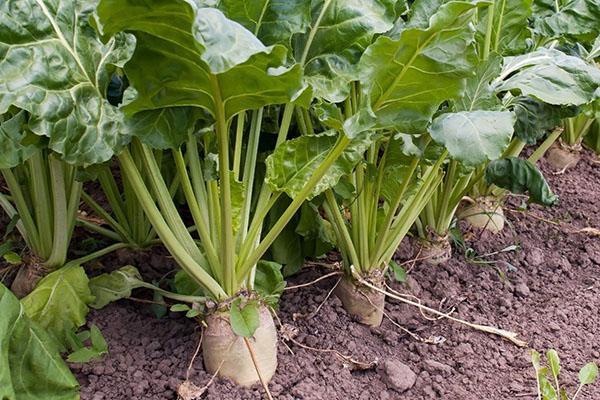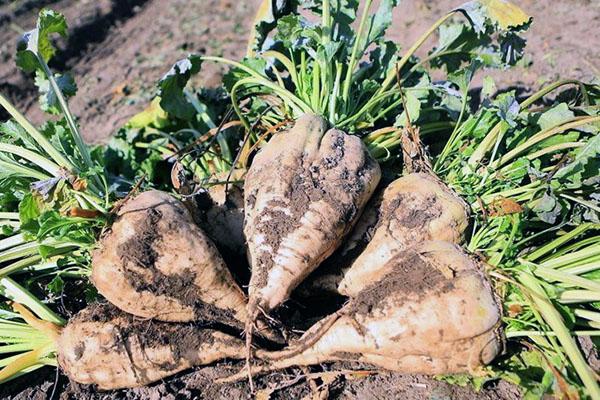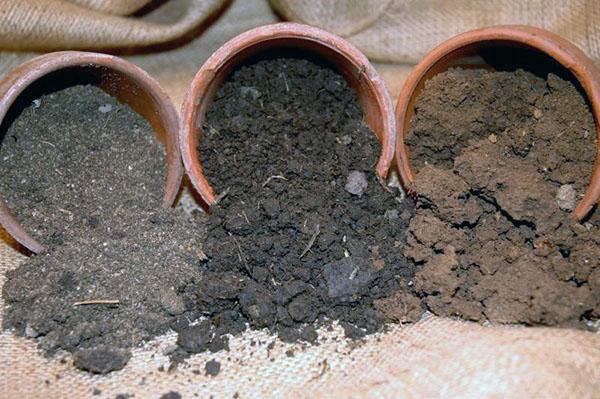How to grow sugar beets: planting and care rules
 Many do not know how to grow sugar beets so that they contain all the necessary trace elements. In fact, everything is very simple. Every summer resident and farmer will be able to get a high-quality and good harvest, if you adhere to simple rules.
Many do not know how to grow sugar beets so that they contain all the necessary trace elements. In fact, everything is very simple. Every summer resident and farmer will be able to get a high-quality and good harvest, if you adhere to simple rules.
Main varieties and their yield

Sugar beet classification:
- Yielding. This type contains 16.5% sugar. With proper planting and care, the yield of these vegetables is high.
- Sugar-yielding. The amount of sugar in such plants is within 18.5%. Pi this vegetable yield is average.
- Sugar beet. It is impossible to get a large number of root crops. But despite this, the sugar content is very high, within 21.5%.
All these types of plants are in demand in the household. Beets are used to feed livestock. Therefore, in order to provide food for animals, one should not only choose the right soil and sow on time, but also choose the right seeds. Only those grains whose length exceeds 3.5 cm should be used. If the seeds are small, then this may indicate that they are not ripe. This means that the germination of such planting material will be minimal.
The most popular beet varieties include Bohemia, Bonu, Araxia and Bigben. All of these species are suitable for processing and give a bountiful harvest.
Sugar beets: soil types
 Beets can grow on any kind of soil, but this does not mean that everywhere they will give the desired result. It is important that the soil is good for air and moisture. Only then will it be easy to achieve the maximum yield.
Beets can grow on any kind of soil, but this does not mean that everywhere they will give the desired result. It is important that the soil is good for air and moisture. Only then will it be easy to achieve the maximum yield.
Also, do not forget about the acidity of the soil. Best suited for beets is the area in which the indicators will be minimal.
Most culture prefers:
- black soil;
- peat bogs;
- sierozem.
In these substrates, beets grow rapidly and gain weight well. All this is due to the content of a huge amount of nutrients.
Also, sugar beets can be sown in sod-podzolic soils, but in this case, you should not expect a bountiful harvest. To get an average number of fruits, it will be necessary to systematically apply top dressing.
In a soddy-podzolic substrate, the amount of sugar in a vegetable is significantly reduced.
Some farmers decide to sow beets on sandy and loamy substrates. In such conditions, the yield will be less than average.
Beet sowing rules
 Before proceeding with the procedure, you need to prepare the site. Loosening of the soil begins in the fall. At this time, soil fertilization is also carried out. For each hundred square meters, 35 kg are applied manure, 2 kg of potassium-phosphorus mixtures. In the spring, 7-14 days before planting, the soil is fertilized with nitrogen preparations. During sowing, superphosphate is additionally introduced into the wells at the rate of 200 g per 1 hundred square meters.
Before proceeding with the procedure, you need to prepare the site. Loosening of the soil begins in the fall. At this time, soil fertilization is also carried out. For each hundred square meters, 35 kg are applied manure, 2 kg of potassium-phosphorus mixtures. In the spring, 7-14 days before planting, the soil is fertilized with nitrogen preparations. During sowing, superphosphate is additionally introduced into the wells at the rate of 200 g per 1 hundred square meters.
Planting seeds is carried out when the soil warms up to +80 C. Measure the temperature at a depth of 5 cm.
To make the sugar beet go off faster, the grains must be soaked in a solution of wood ash before planting.
Sowing of seeds is carried out in holes, the depth of which is in the range from 2 to 4 cm. If the soil is heavy, then the indicators should be minimal. It is also worth sticking to the distance between the rows.It should be about 45 cm. It is not worth making furrows more often, as this can negatively affect the development of the root crop.
There are several ways to sow beets, but the most effective is the use of fine-grained sand. Before starting the procedure, you will need to combine 10 kg of sand and 1000 beet seeds. Mix everything thoroughly. Then slowly fill the grooves with a thin stream. Sprinkle with soil on top to form a tubercle. Then water abundantly.
Thinning is carried out in 2 stages. The first is 5-6 cm, and the second is 18 cm.
How to Grow Sugar Beets: Pest and Weed Control
 Most often, the plant suffers from brown and late rot. You can get rid of it with the help of insecticides. An excellent option is Fitovern and Fitosporin. The peculiarity of these drugs is that they are absolutely safe for humans, animals and nature. The funds do not accumulate in the soil and plants, but completely disintegrate under the influence of various factors.
Most often, the plant suffers from brown and late rot. You can get rid of it with the help of insecticides. An excellent option is Fitovern and Fitosporin. The peculiarity of these drugs is that they are absolutely safe for humans, animals and nature. The funds do not accumulate in the soil and plants, but completely disintegrate under the influence of various factors.
If the beets are planted in small quantities, then get rid of the weeds it is also possible by the method of ordinary weeding. For large plantations, it is better to use herbicides based on des- and phenmedifan. The plot is processed only early in the morning or in the evening, when the air temperature near the ground will be within 150 C - 250 C. It is also important to make sure that it does not rain outside. Precipitation will not give the desired result.
When to harvest
 Sugar beet ripens towards the end of September. If the weather is warm and pleasant outside, then harvesting can be postponed to October.
Sugar beet ripens towards the end of September. If the weather is warm and pleasant outside, then harvesting can be postponed to October.
Dig up the beets very carefully. This is due to its fragile roots. If chips appear on the vegetable or it breaks, then there is a high probability that the beets will start to rot.
You need to keep the harvested crop at a temperature that ranges from +10 From to +30 C. In regions where very severe frosts are observed in winter and it is impossible to provide an optimal place for beets, they can be frozen. In such conditions, the vegetable is stored for a very long time, but only if the indicators do not exceed -70 FROM.
If there is no room that could be used as a vegetable store, it is recommended to keep the beets in piles. Cover everything from above with heat-insulating material. This can be straw, sawdust or compacted snow.
Sugar beet is a vegetable that is widely popular all over the world. When grown correctly, you can get a bountiful harvest that meets all the requirements.